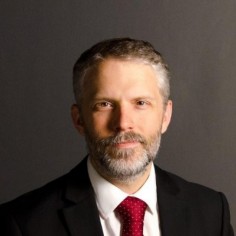The National Retail Federation’s latest “State of Retail & the Consumer” report forecasts that retail sales will reach nearly $5.3 trillion this year, about a 3 percent increase over last year. The retail sector is responsible for 55 million fulltime jobs and 20.4 percent of U.S. GDP, the NRF reports.
But headlines about crime and store closures tell the other side of the story. How much larger would the U.S. retail economy be if it weren’t under attack from crooks, counterfeiters and organized crime?
“I am quite concerned with the prospects in the retail sector,” Joel Griffith, an economist with The Heritage Foundation told InsideSources.
Dollar Tree plans to close 1,000 stores due in part to the impacts of inflation and crime. Other retailers like Target and Walmart are ending end self-service registers because of theft.
Griffith blamed the closure of Walmart’s store by Capitol Hill in Washington, DC due to rampant theft. Target also shut down three locations in California’s Bay Area due to theft.
A NRF spokesperson said that shrink accounted for $112.1 billion in losses, up from $93.9 billion in 2021.
Alysa Erichs of United to Safeguard America from Illegal Trade (USA-IT) said consumers should pay attention.
“Those losses impact business models,” she told InsideSources. “The business model then has to make up for that loss in some way, and it could be higher prices, it could be closing stores, it could be layoffs of employees.”
The problem of organized retail crime, mass shoplifting and smash-and-grab robbery is no secret to Americans who watch cable news. Just days ago, thieves smashed a glass display and pepper-sprayed a Neiman Marcus worker at a Florida mall, stealing tens of thousands of dollars in merchandise.
In Los Angeles, a smash-and-grab crew targeting Prada, Gucci and other luxury goods was arrested on charges of stealing more than $300,000 worth of merchandise in broad daylight.
Meanwhile, counterfeit goods continue to flood the U.S. market, many made in China. And while retailers have long been forced to deal with fake goods, new technology has given counterfeiters a new tool to move their products.
“We are seeing an increase in the use of social media to attract media to ‘it’s cool to buy counterfeit’ sort of messaging and or recruiting folks to do the larger smash and grab type operations,” said Erichs. “It has become almost a pandemic in that it is becoming acceptable.”
Stephen Lamar, president and CEO of American Apparel & Footwear Association (AAFA), said counterfeiters figured out ways to make shoppers think they are saving some money at a steep discount or bargain. It’s a case of something being too good to be true.
“Say you go on a third-party website because you got a link through your Facebook page and the next thing you know you are being offered for sale what appears to be 20 percent off or 25 percent off your favorite outdoor brand,” he told InsideSources. “You buy it, and it turns out it was not made by your favorite outdoor brand.”
This is why consumers should be reluctant to buy certain items through social media. Erichs said it could make people ill or cause injuries. As for the seller, that money could go towards nefarious activities including terrorism.
Griffith saw warning signs for the future of the retail industry.
“There are 540,000 current job openings listed…down by more than 50 percent over the last year and a half or so,” he said. “You have to go all the way back to the shutdown era — back in the middle part of 2020 — to find a month in which there were fewer job openings in the retail sector. These are some low numbers, and I am concerned that this could end up translating into some job losses.”
Despite the headwinds, the NRF remained optimistic.
“The retail industry continues to expand in every way possible, from the number of jobs it supports to the number of retail businesses, and its total impact on GDP,” said NRF President and CEO Matthew Shay. “As the largest private-sector employer, American families and workers depend on a strong retail economy for continued growth and opportunity in communities large and small across the country.”





